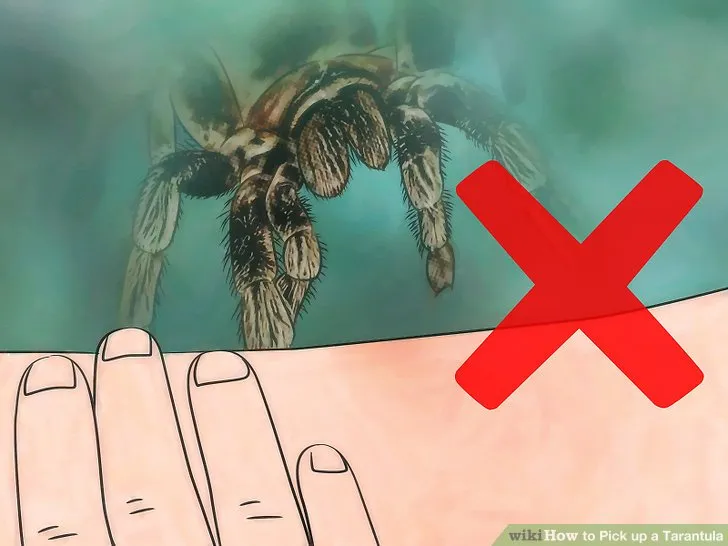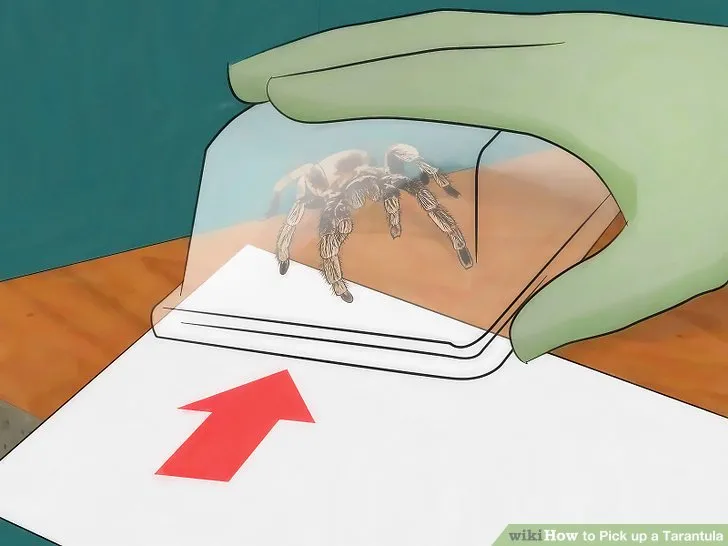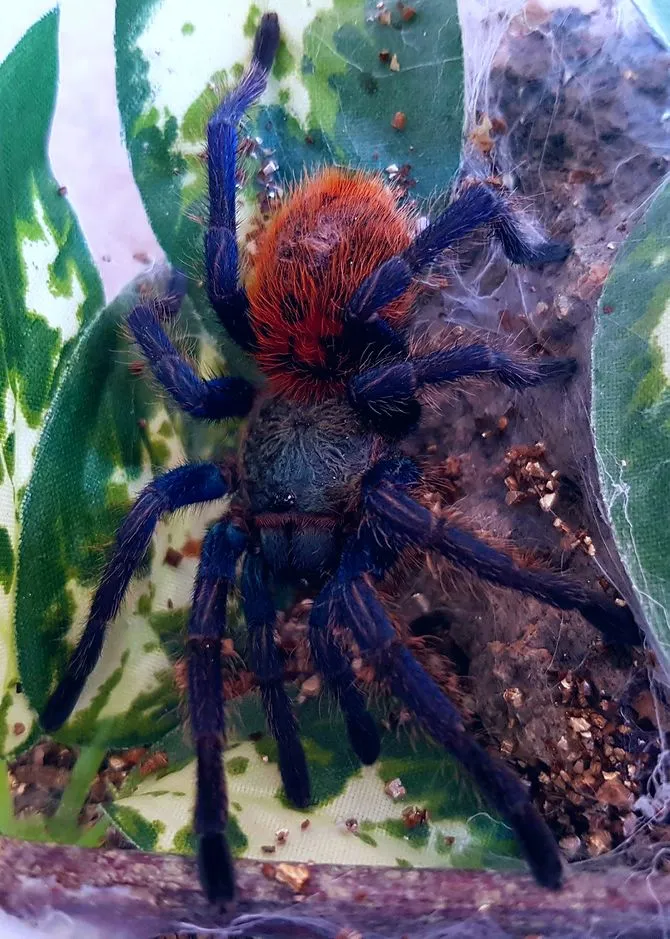What You Need to Know Before Catching a Tarantula
Catching a tarantula might sound like a thrilling adventure, but it’s crucial to approach it with caution and respect for these fascinating creatures. Tarantulas, while not typically aggressive, can deliver a painful bite if they feel threatened, and their urticating hairs can cause skin and eye irritation. This guide provides essential information on how to safely catch a tarantula, emphasizing the importance of understanding their behavior, proper equipment, and ethical considerations. Before you even think about approaching a wild tarantula, take a moment to assess the situation and ensure your safety and the spider’s well-being. Remember that your actions impact the tarantula’s safety, therefore it’s important to follow safety protocols.
Understanding Tarantula Behavior
Understanding a tarantula’s behavior is paramount to a safe encounter. These arachnids are generally shy and prefer to avoid conflict, but they will defend themselves if they feel threatened. Observe the spider’s posture and movements. A tarantula that is raising its front legs, rearing up on its hind legs, or exposing its fangs is signaling a defensive stance. Some species may also flick urticating hairs from their abdomen as a warning. Recognize these behaviors to avoid provoking the tarantula. Observe the tarantula’s reaction before any action. Observe if the tarantula is on the hunt or defending its territory. Keeping a safe distance is the best way to ensure your safety and avoid stressing the spider.
Identifying Tarantula Species

Identifying the species of tarantula you encounter is essential. Different species have varying temperaments and venom potencies. Research the tarantulas native to your area to understand their characteristics. Some species are known to be more docile, while others are more prone to defensive behavior. Knowing the species can also help you anticipate its reaction. For example, certain tarantulas are more likely to flick urticating hairs, while others may be more inclined to bite. Also, species identification may be important for legal reasons, as some species are protected by local regulations. Take a photo from a safe distance for later identification. A clear picture will help you to identify and research the species from a safe distance. (image tarantula-species.webp)
Recognizing Aggressive Postures
Tarantulas communicate their intentions through various postures. Learning to recognize these behaviors is crucial for avoiding a bite. A tarantula in a defensive posture will often raise its front legs, exposing its fangs. It may also rear up on its hind legs, a clear sign of aggression. Some species will also flick urticating hairs from their abdomen, which can cause significant irritation. If a tarantula exhibits any of these behaviors, it is best to back away and avoid any further interaction. Never provoke a tarantula; always give it space and respect its boundaries. This is important when you learn how to pick up wild tarantula. By observing these behaviors, you can anticipate its next move and prevent potential injury.
Essential Equipment for Catching a Tarantula
Gathering the right equipment is critical for a safe and successful tarantula capture. Proper gear not only protects you from potential harm but also minimizes stress on the spider during the process. It’s important to prioritize your safety and the spider’s well-being when preparing to catch a tarantula. Choosing the right tools and equipment ensures that the process is as safe as possible for everyone involved. From protective gear to capture and transport tools, each item plays a vital role in a responsible capture. Always ensure that all equipment is clean and in good condition before use. Regularly inspect your equipment for damage and replace items as needed. This proactive approach enhances safety and promotes a successful outcome. (image protective-gear.webp)
Protective Gear

Essential protective gear includes thick gloves, long sleeves, and eye protection. These items provide a barrier against bites, urticating hairs, and potential irritants. Choose gloves made of a durable material such as leather or heavy-duty synthetic material to provide a good level of protection against bites. Long sleeves will protect your arms from both bites and urticating hairs. Eye protection, such as safety glasses or goggles, is crucial to prevent irritation from the spider’s hairs. Consider wearing a face mask or respirator if you are particularly sensitive to allergens. Remember that protective gear is an essential investment in your safety. Ensure that all protective gear fits comfortably and allows for a good range of motion. Proper fit is vital for the equipment to function effectively. Additionally, it’s important to regularly inspect protective gear for signs of wear and tear. Any damage can compromise the protection it offers, so it is best to repair or replace equipment as needed.
Capture Tools
The primary capture tool is a long-handled container or a sturdy jar. The jar or container should be large enough to comfortably accommodate the tarantula without crowding it. Avoid using containers with sharp edges that could injure the spider. A long-handled tool allows you to maintain a safe distance while guiding the tarantula into the container. It also helps prevent you from getting too close and potentially provoking the spider. A wide-mouthed container is generally easier to use, as it provides more room for the spider to move into without feeling trapped. You may also want to carry a long stick or a piece of cardboard to gently coax the spider into the container if necessary. When choosing capture tools, make sure they are made of durable materials that can withstand repeated use. Regularly clean and disinfect your capture tools to prevent the spread of potential contaminants. (image capture-tools.webp)
Transport Containers
A secure transport container is essential for safely moving the tarantula. The container should have a secure lid that prevents escape and a breathable design to ensure adequate ventilation. Consider using a plastic container with a lid that snaps securely or a specialized tarantula transport box. The container should be large enough to prevent the tarantula from being crushed during transport but not so large that it can move around excessively. Adequate ventilation is crucial to prevent overheating and ensure that the spider can breathe. You can achieve this by adding small air holes to the lid or sides of the container. Add some substrate, such as paper towels or a small piece of bark, to provide the tarantula with a place to grip and feel secure during transport. This also helps to absorb any moisture and keeps the spider comfortable. Make sure your container is escape-proof; tarantulas are surprisingly adept at finding and exploiting small openings. (image transport-container.webp)
Step-by-Step Guide to Catching a Tarantula

Catching a tarantula requires patience, precision, and a calm approach. This step-by-step guide will help you navigate the process safely and effectively. Remember to prioritize the well-being of both yourself and the spider. From finding the tarantula to securing it in a container, each step must be handled with care. Before you proceed, double-check that you have all the necessary equipment and are fully prepared. It’s important to remain calm and composed throughout the process. This will help you make rational decisions and prevent unnecessary stress for the tarantula. Avoid making sudden movements or loud noises that could startle the spider. Proceed with caution and be prepared to adjust your approach based on the tarantula’s behavior.
Locating a Tarantula
Tarantulas are often found in burrows, under rocks, or in areas with dense vegetation. Look for signs of tarantula activity, such as silk webbing or discarded exoskeletons. The best time to find tarantulas is often during the late evening or early morning, when they are most active. Some species are nocturnal and may be easier to spot after dark. When searching, scan the ground carefully and pay attention to the environment. Tarantulas may blend in well with their surroundings, so patience and a keen eye are essential. Use a flashlight or headlamp to illuminate potential hiding spots. Remember to maintain a safe distance and avoid disturbing the environment. Disturbing their habitat is not only unethical but also could make the tarantula more defensive. Scan the ground and look for signs of activity. (image tarantula-in-habitat.webp)
Approaching the Tarantula
Approach the tarantula slowly and deliberately. Avoid making sudden movements or loud noises. Observe the spider’s behavior and posture. If it appears agitated or defensive, it is best to retreat and reassess the situation. Move slowly and speak calmly to avoid startling the spider. Maintain a safe distance, and do not attempt to touch or handle the tarantula directly. Use your long-handled container to approach it gradually. This will help to minimize stress on the spider and ensure a successful capture. (image approaching-tarantula.webp)
Capturing the Tarantula

Once you are close enough, carefully position the container near the tarantula. Gently guide the spider into the container using a long stick or piece of cardboard. Do not attempt to force the tarantula into the container. If the spider resists, remain patient and wait for it to move on its own. Once the tarantula is inside the container, quickly and securely close the lid. Observe the tarantula’s behavior to ensure it is not trapped or injured. Handle the container with care to prevent the spider from being shaken or jolted. Avoid excessive movement and handle the container gently to minimize the stress on the tarantula. (image capture-tools.webp)
Transporting the Tarantula
Carefully transport the container to its destination, whether you plan to release it or relocate it. Ensure the container is secure and well-ventilated. Avoid exposing the container to extreme temperatures or direct sunlight. Place the container in a stable and secure location to prevent it from tipping over. Monitor the tarantula during the transport to ensure it remains calm and safe. Once you have reached your destination, assess the environment. Prioritize the safety of the tarantula at all times. Choose a secure location for the release or relocation. (image transport-container.webp)
Post-Capture Considerations
After successfully capturing a tarantula, there are a few important considerations to ensure its well-being and your safety. The primary goal is to minimize stress on the spider and to handle the situation ethically and responsibly. Whether you plan to release the tarantula or relocate it, taking appropriate measures will help the tarantula thrive in its new environment. Your actions at this point can make a significant difference in the spider’s survival. Take these considerations to heart as you navigate through the next steps. Always remember that the tarantula’s welfare is paramount, so handle it with care and consideration throughout the process.
Releasing the Tarantula

If you are releasing the tarantula, choose a suitable habitat that matches its natural environment. Avoid releasing the spider in an area where it is likely to encounter threats, such as pesticides or predators. Place the container near the ground and gently open the lid, allowing the tarantula to leave on its own. Do not force the spider out of the container. Allow the tarantula to acclimate to its surroundings before departing. Observe the tarantula from a distance to ensure it is doing well. If you are unsure about the suitability of the release site, it is best to contact a local wildlife expert for guidance. (image releasing-tarantula.webp)
Caring for a Captured Tarantula
If you intend to care for a captured tarantula, you must provide a suitable habitat. This includes an appropriate enclosure, substrate, temperature, and humidity. Research the specific needs of the tarantula species to ensure its survival and well-being. Provide the tarantula with a balanced diet, including insects or other prey items. Supply a water source to ensure it stays hydrated. Regularly monitor the enclosure’s conditions and make adjustments as needed. Ensure the tarantula’s habitat is safe and secure. This will prevent escapes and protect the spider from potential harm. Consult with a qualified expert or experienced tarantula keeper for additional guidance on caring for these fascinating creatures. This should only be considered if you have experience handling tarantulas and a safe habitat.
Legal Considerations and Ethical Practices
Before attempting to catch a tarantula, it is essential to be aware of any local laws and regulations. Some species are protected by law, and it may be illegal to capture or keep them. Respect the environment and the natural habitat of the tarantulas. Avoid disturbing the environment unnecessarily, and never remove tarantulas from their habitat unless there is a valid reason. Consider the ethical implications of your actions. Catching a tarantula should always prioritize the spider’s well-being and safety. If you are unsure about the legality of catching a tarantula in your area, contact local wildlife authorities. Ethical practices require treating all wildlife with respect and consideration. Take care to avoid causing any harm to the tarantula or disrupting its natural environment. By following these ethical guidelines, you can ensure that your actions are responsible and contribute to the conservation of these magnificent creatures.
